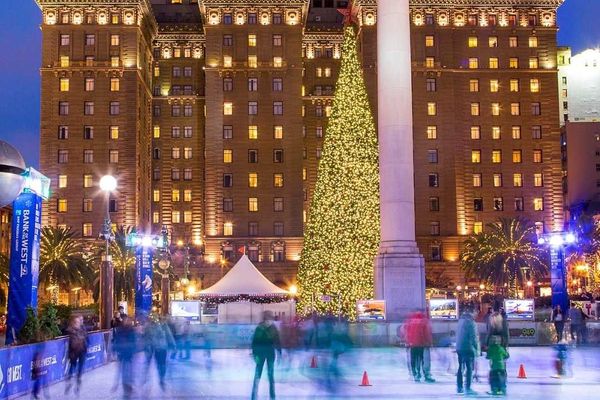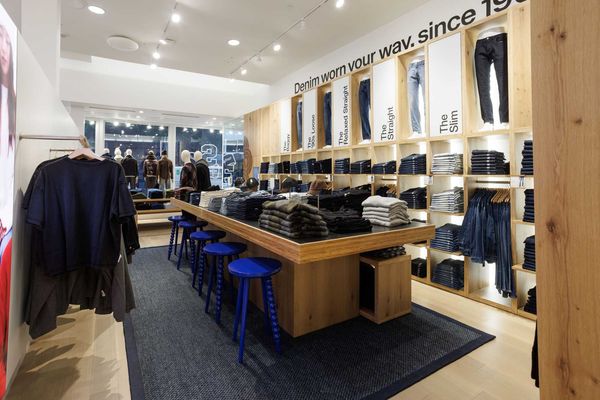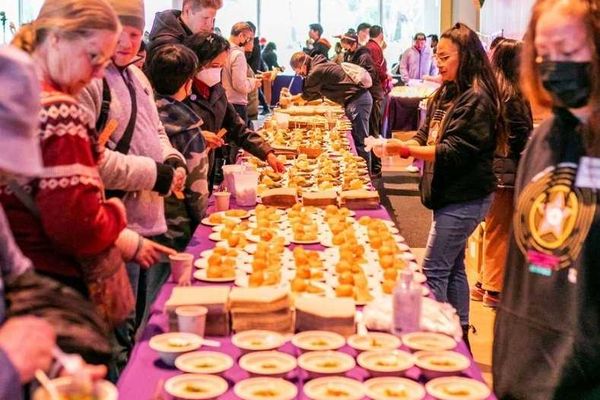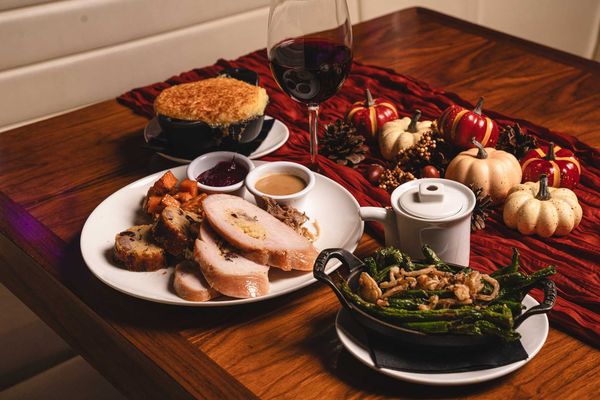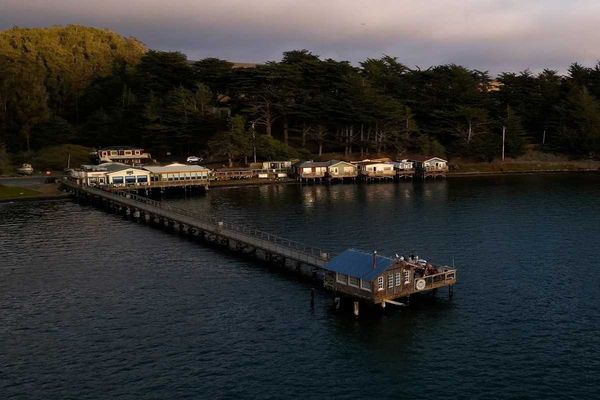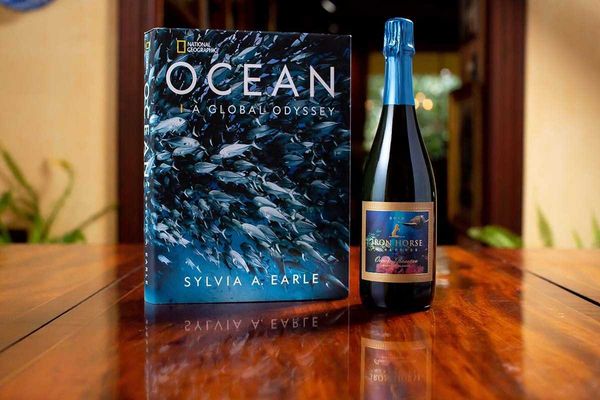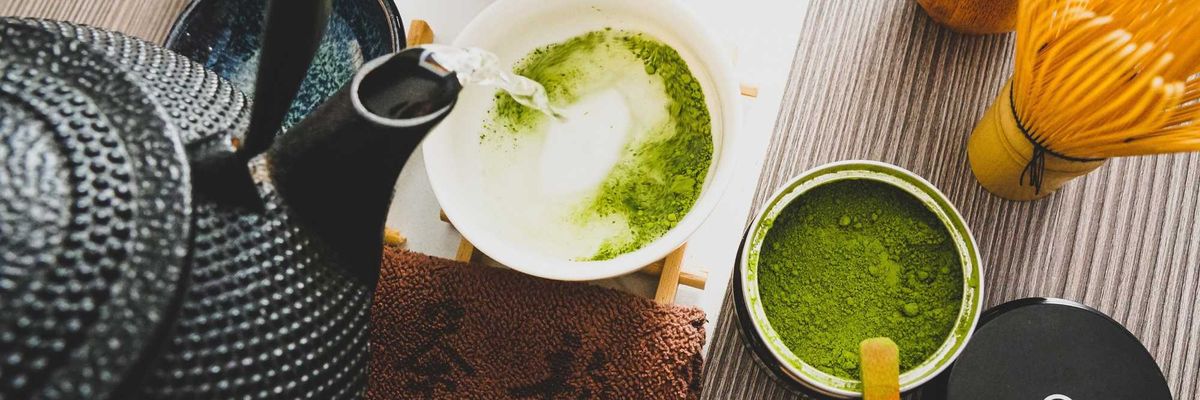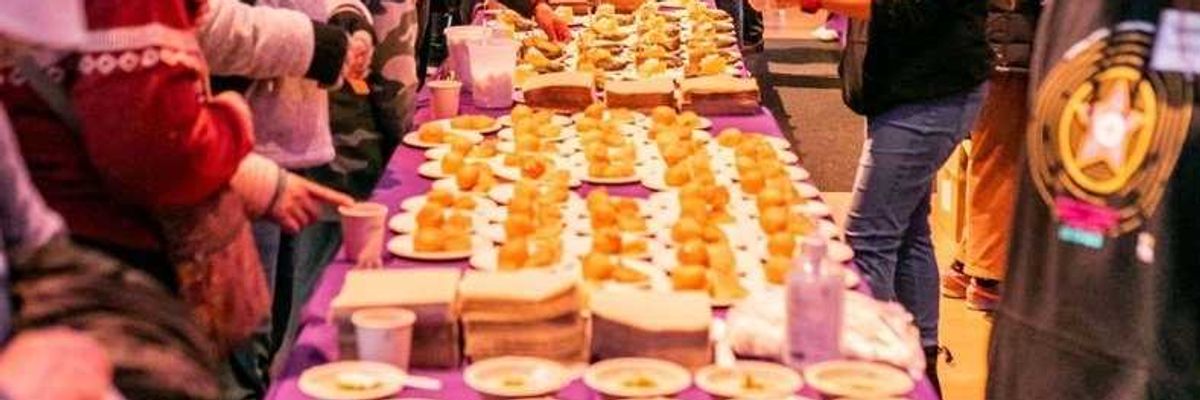Outside the Peet’s in Potrero Center, there’s a flock of birds that perches on the empty chairbacks near people sitting and sipping their espresso. It’s easy to take them for blackbirds looking for food, but they’re not. Blackbirds are like New Yorkers: restless, quick, aggressively biting at opportunities. These slower and more patient creatures are cowbirds, who might grab a crumb if it lands near them but are generally content just to sit near people, as if enjoying their company, which they are, in a way. Cowbirds evolved to survive on the insects startled out of the grass by herds of bison and cattle, equipping them with an instinct to hang around groups of large, sedentary mammals. Somehow this flock found its way to a place where there are no cattle, and so they seek out the company of the only large, sedentary mammals they can find: San Franciscans drinking coffee and working on their laptops.
There’s something, as we like to say, “very San Francisco” about this odd, serene scene. It reminds me of one of our best traits, our ability to coexist quietly, perching in our separate worlds in a sort of loose mutualism, even a benign indifference. I experience fewer tensions here around cultural or individual contrasts—fewer tensions about anything, really, except parking—than in any other city.
I experience something else, too, as I move through the city: some lack of collective identity, a mystery about what it means to be a San Franciscan. From neighborhood to neighborhood, I feel like I’m moving through herds and flocks of very different creatures, coexisting contentedly but in separate realities. When I drive from Noe Valley to a Hong Kong dessert place in the Sunset, it’s hard to say how the guy behind the counter and I are both San Franciscans except in the literal fact of our residence. This is not about being a native or an immigrant, either. Raised in the Santa Clara Valley, I feel very Californian—genial but cautious, with a certain mellow, all-weather slowness. But by that very fact, I feel like a perpetual visitor in this foggy island that feels as far from California as anywhere else.
Neither can you blame this lack of identity on our diverse population. New York is the most heterogeneous city imaginable, yet there’s still a strong sense of what it means to be a New Yorker—someone who, whether his ancestral tongue is Italian, Yiddish, or Southern black, has been molded by the city to a certain attitude and speed, a particular way of pronouncing “r.” Here, we don’t even agree on how to pronounce our street names. On my way to Candlestick Park, I drive past Kay-sah-dah Street, but the people ignoring my car live on Kyoo-say-duh Street. (Don’t even get me started on the East Coast expats who still talk about Jew-nipero Serra Boulevard.)
There are native San Franciscans. My former doctor is one, proud to be sending his son to Lowell, his own high school. His San Francisco, though, is a city of tract homes on quiet streets inhabited by low-profile Asian professionals, a city I’ve barely come to know in three decades here. There are even old-soil, multigenerational San Franciscans. But most of them live in San Bruno. Drive down Mission through Daly City until it becomes the El Camino and you’ll see the people I’m talking about. If you stay on this road, you’ll eventually pass the San Francisco Police Credit Union Building, a hint at how many of our civil servants—one of the city’s most definitive populations—have moved out of town. Barring a very small percentage of families that you’d call old money, the generational San Franciscans who still live within city limits are mostly an invisible substrate.
Recently, a friend of mine took off on a rant about the bridge-and-tunnel crowd, those invaders from San Ramon and Novato whom she only grudgingly tolerates in her city. She is the very image of one version of San Francisco, riding her bike in her canvas high-tops and Peruvian knit cap. Except that she just moved here from Pennsylvania five years ago, while I’m sure many of her despised bridge-and-tunnelers grew up within 20 miles of here. Who’s more San Franciscan?
What most of us consider San Franciscan is constantly being rewritten, usually by newcomers. Again, I could say so is New York, but there, a continuous culture of publishing and galleries molds new influences into an unmistakably Manhattanish shape. The New York literary community is full of out-of-town immigrants, but most seem directed by a sense of being New York writers, with the ghosts of Max Perkins and William Shawn lurking in the corners. At the SF Writers’ Grotto, where I feel like something of an oddball for being from the Bay Area, I can’t say what distinguishes us as SF writers, except maybe a relative lack of vanity and competitiveness. That’s often how we define San Francisco, not by what it is but by what it’s not—specifically, not New York or LA.
Maybe that indefinability is one of this city’s great virtues. It’s less an entity than a stage, a benign and beautiful setting in which we all have the freedom to create our own, separate San Franciscos. Like the Peet’s patrons and the cowbirds, we exist side by side but in different realms. The woman with the latte may never understand that the bird on the next chair is there for her company and not her scone. Neither will she completely understand the motives and aspirations of her neighbors at the next table, whom she’ll call fellow San Franciscans without fully knowing what that means.
In that quiet coexistence there is deep comfort. We all perch together in the diluted sunlight of a San Francisco morning, lost in our own contemplations, nomads at rest, waiting together for the universe to serve up its largesse. These can be the city’s sweetest moments, these tentative encounters between two locals both feeling like eternal visitors, no one having any proprietary claims or any particular roles, pausing for a few brief moments in our separate migrations.
Gerard Jones is the author of five non-fiction books and numerous graphic novels and comic books. His new book, The Undressing of America: How a Bodybuilder, a Swimming Queen and a Magician Created Reality Media, will be coming from Farrar, Straus and Giroux in 2012.







